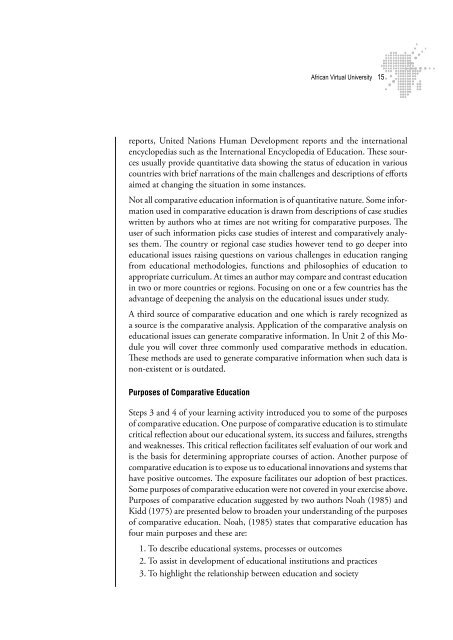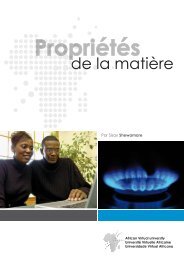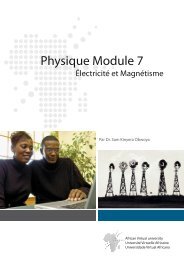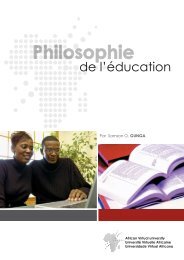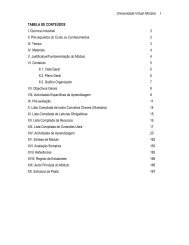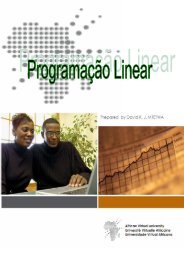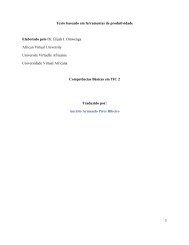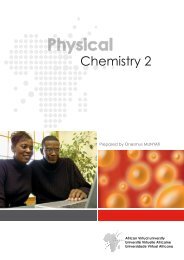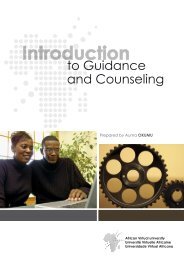Comparative Education.pdf - OER@AVU - African Virtual University
Comparative Education.pdf - OER@AVU - African Virtual University
Comparative Education.pdf - OER@AVU - African Virtual University
You also want an ePaper? Increase the reach of your titles
YUMPU automatically turns print PDFs into web optimized ePapers that Google loves.
<strong>African</strong> <strong>Virtual</strong> <strong>University</strong><br />
reports, United Nations Human Development reports and the international<br />
encyclopedias such as the International Encyclopedia of <strong>Education</strong>. These sources<br />
usually provide quantitative data showing the status of education in various<br />
countries with brief narrations of the main challenges and descriptions of efforts<br />
aimed at changing the situation in some instances.<br />
Not all comparative education information is of quantitative nature. Some information<br />
used in comparative education is drawn from descriptions of case studies<br />
written by authors who at times are not writing for comparative purposes. The<br />
user of such information picks case studies of interest and comparatively analyses<br />
them. The country or regional case studies however tend to go deeper into<br />
educational issues raising questions on various challenges in education ranging<br />
from educational methodologies, functions and philosophies of education to<br />
appropriate curriculum. At times an author may compare and contrast education<br />
in two or more countries or regions. Focusing on one or a few countries has the<br />
advantage of deepening the analysis on the educational issues under study.<br />
A third source of comparative education and one which is rarely recognized as<br />
a source is the comparative analysis. Application of the comparative analysis on<br />
educational issues can generate comparative information. In Unit 2 of this Module<br />
you will cover three commonly used comparative methods in education.<br />
These methods are used to generate comparative information when such data is<br />
non-existent or is outdated.<br />
Purposes of <strong>Comparative</strong> <strong>Education</strong><br />
Steps 3 and 4 of your learning activity introduced you to some of the purposes<br />
of comparative education. One purpose of comparative education is to stimulate<br />
critical reflection about our educational system, its success and failures, strengths<br />
and weaknesses. This critical reflection facilitates self evaluation of our work and<br />
is the basis for determining appropriate courses of action. Another purpose of<br />
comparative education is to expose us to educational innovations and systems that<br />
have positive outcomes. The exposure facilitates our adoption of best practices.<br />
Some purposes of comparative education were not covered in your exercise above.<br />
Purposes of comparative education suggested by two authors Noah (1985) and<br />
Kidd (1975) are presented below to broaden your understanding of the purposes<br />
of comparative education. Noah, (1985) states that comparative education has<br />
four main purposes and these are:<br />
1. To describe educational systems, processes or outcomes<br />
2. To assist in development of educational institutions and practices<br />
3. To highlight the relationship between education and society


